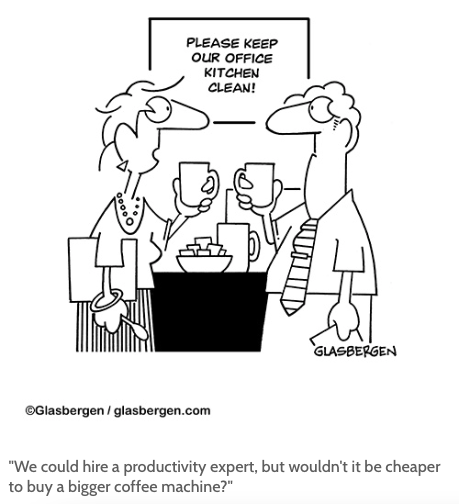HR and Payroll Experts Weigh In On How Positive Feedback Can Help Avoid ‘Career Cushioning’

While the Canadian employment rate edges up, offsetting the decline in the previous months, some negative trends still garner attention. Among these, ‘quiet quitting’ and ‘career cushioning‘ have recently surfaced as a concerning trend with potential repercussions for the workplace.
This trend has been popular in the 17th Floor community lately. As of this article’s publication date, 54% of our members admitted to having seen cases of ‘career cushioning’ in their workplaces.
This means they have coworkers who, even when committed to their current job, are constantly entertaining offers, interviews, or engagements from other potential employers as a ‘backup.’
Why is ‘Career Cushioning’ a Concern in Canada?
1. Employee Turnover
Constantly looking for the next best thing can lead to higher turnover rates. With employees always having one foot out the door, Canadian companies might struggle to maintain a stable workforce.
According to Simply Benefits:
- An entry-level employee turnover cost is between 30% and 50% of their annual salary to replace.
- A mid-level employee turnover costs 150% and above of their annual salary to replace.
- A high-level or highly specialized employee costs approximately 400% of their annual salary to replace.
2. Decreased Productivity
Employees whose attention is divided are less likely to invest in their current role fully. They might be spending work hours browsing job boards, attending interviews, or networking with potential employers. This diminishes the output and overall productivity of the workforce.
3. Erosion of Trust
‘Career cushioning’ can also erode the trust between employers and employees. Trust is a cornerstone of any productive working relationship, and feeling that an employee isn’t fully committed can strain this foundation.
The Power of Positive Feedback
While ‘career cushioning’ highlights a concerning trend, there’s a counter-strategy that holds immense potential for the Canadian workplace: the art of positive feedback. According to one of 17th Floor’s partners, Canadian HR software company Folks, healthy feedback can be a game-changer.
Feedback culture in the workplace refers to attitudes and processes that encourage open business communication in order to collect, share and receive constructive feedback. The goal is to improve working practices and individual and organizational success while maintaining a positive workplace environment.
Constructive feedback fosters a sense of accomplishment and belonging among employees. When they feel their efforts are acknowledged and appreciated, they are more likely to be engaged in their work.
Positive feedback doesn’t just make employees feel good; it directly impacts their performance. According to Zippia, 69% of employees say they would work harder if they felt their efforts were being recognized through feedback.
See what our members think about this matter.
[bondai_article_user user_id=”496″ description=”Continuous feedback is integral, whether it be constructive or positive. Immediate acknowledgement and recognition are so important to ensure employees know how they are doing, feel appreciated, and, if necessary, be able to work on areas of improvement in a timely manner.”]
[bondai_article_user user_id=”1910″ description=”I’m with Kirsty on continuous feedback. I receive and provide feedback in our staff meetings, our 1 on 1’s, and after a project or event. Of course, I also provide feedback in performance reviews. However, nothing should be a big surprise in the review: good, bad, (lack of a better word) or otherwise. And as Lisa noted, ‘Team members need to be honest with their leaders (and leaders need to be gracious in receiving it).'”]
A culture of appreciation can significantly reduce the desire to look elsewhere for validation. And as the Canadian labour market continues to grow and diversify, it’s essential to address trends like ‘career cushioning’ head-on. However, the solution might not be in complex HR strategies but in the simple act of positive acknowledgment.
[poll-form id=21101 see_comments=no]
Sources:


Denise Burnett
Feedback opens the door to better communication between staff and leadership. It needs to flow both ways for it to be productive. Managers need to be willing to take the feedback from staff and act upon it, as appropriate. Managers need to be willing to have the tough conversations and follow up on progress, holding each other accountable. They also need to try to catch staff doing positive things and be vocal about their efforts.
This is a good angle too. Highlighting when someone does something positive to set an example. Thank you, Denise!
Caitlin Henderson, PCP
Do not communicate to staff that they are replaceable. If management has created a culture that the employees are not valuable and everyone can be easily replaced, employees will believe the same and be always on the lookout for something else. The tips in this article and many more from the 17th floor are great ways to have a positive culture and lead employees to want to stay at your organization. Positive feedback and an environment of trust go a long way for the management/employee relationship.
Absolutely agree. A positive workplace culture, where employees feel valued and irreplaceable, is crucial. It not only enhances employee satisfaction but also reduces turnover, benefiting HR and payroll management. Thank you for highlighting this; it’s a vital aspect of nurturing a successful organization.